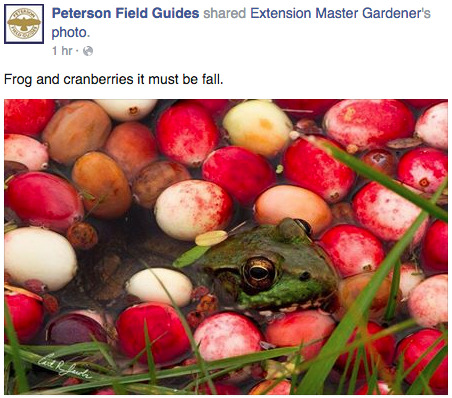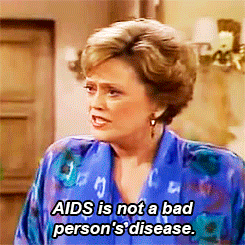Schnilf - ( ˇ෴ˇ )

More Posts from Schnilf and Others








"We are now living in the awareness of being watched, and that does change how we allow ourselves to think and develop as humans."
- Silkie Carlo (Big Brother Watch) in Coded Bias

one of my fave posts honestly
ever since I was a little kid I wanted to be a post office

this is not the most relevant of all the criticisms I have but it is the most amusing

except for gale of course who is a fucking emo
one of the things I really love about this game is that if you empower and support your friends (while! calling out their bs and not enabling) then they just MAKE THE RIGHT DECISION that is most ethical and/or best for them ON THEIR OWN and that is so!! good!!! IT IS SO GOOD!!! AAAAAHHHH
What is a ‘wug’?
If you’ve been to linguist tumblr (lingblr), you might have stumbled upon this picture of a funny little bird or read the word ‘wug’ somewhere. But what exactly is a ‘wug’ and where does this come from?
The ‘wug’ is an imaginary creature designed for the so-called ‘wug test’ by Jean Berko Gleason. Here’s an illustration from her test:

“Gleason devised the Wug Test as part of her earliest research (1958), which used nonsense words to gauge children’s acquisition of morphological rules—for example, the “default” rule that most English plurals are formed by adding an /s/, /z/ or /ɨz/ sound depending on the final consonant, e.g., hat–hats, eye–eyes, witch–witches. A child is shown simple pictures of a fanciful creature or activity, with a nonsense name, and prompted to complete a statement about it:
This is a WUG. Now there is another one. There are two of them. There are two ________.
Each “target” word was a made-up (but plausible-sounding) pseudoword, so that the child cannot have heard it before. A child who knows that the plural of witch is witches may have heard and memorized that pair, but a child responding that the plural of wug (which the child presumably has never heard) is wugs (/wʌgz/, using the /z/ allomorph since “wug” ends in a voiced consonant) has apparently inferred (perhaps unconsciously) the basic rule for forming plurals.
The Wug Test also includes questions involving verb conjugations, possessives, and other common derivational morphemes such as the agentive -er (e.g. “A man who ‘zibs’ is a ________?”), and requested explanations of common compound words e.g. “Why is a birthday called a birthday?“ Other items included:
This is a dog with QUIRKS on him. He is all covered in QUIRKS. What kind of a dog is he? He is a ________ dog.
This is a man who knows how to SPOW. He is SPOWING. He did the same thing yesterday. What did he do yesterday? Yesterday he ________.
(The expected answers were QUIRKY and SPOWED.)
Gleason’s major finding was that even very young children are able to connect suitable endings—to produce plurals, past tenses, possessives, and other forms—to nonsense words they have never heard before, implying that they have internalized systematic aspects of the linguistic system which no one has necessarily tried to teach them. However, she also identified an earlier stage at which children can produce such forms for real words, but not yet for nonsense words—implying that children start by memorizing singular–plural pairs they hear spoken by others, then eventually extract rules and patterns from these examples which they apply to novel words.
The Wug Test was the first experimental proof that young children have extracted generalizable rules from the language around them, rather than simply memorizing words that they have heard, and it was almost immediately adapted for children speaking languages other than English, to bilingual children, and to children (and adults) with various impairments or from a variety of cultural backgrounds. Its conclusions are viewed as essential to the understanding of when and how children reach major language milestones, and its variations and progeny remain in use worldwide for studies on language acquisition. It is “almost universal” for textbooks in psycholinguistics and language acquisition to include assignments calling for the student to carry out a practical variation of the Wug Test paradigm. The ubiquity of discussion of the wug test has led to the wug being used as a mascot of sorts for linguists and linguistics students.”
Here are some more illustrations from the original wug test:



Sources:
Wikipedia, All Things Linguistic
but you have to consider the shrimplications…
-
 keenpicklepiescissors liked this · 3 weeks ago
keenpicklepiescissors liked this · 3 weeks ago -
 wildinthemachine reblogged this · 4 weeks ago
wildinthemachine reblogged this · 4 weeks ago -
 lookinatfrogs reblogged this · 1 month ago
lookinatfrogs reblogged this · 1 month ago -
 lookinatfrogs liked this · 1 month ago
lookinatfrogs liked this · 1 month ago -
 eldritchazure liked this · 1 month ago
eldritchazure liked this · 1 month ago -
 chimericalgryphon liked this · 1 month ago
chimericalgryphon liked this · 1 month ago -
 thenamelesseclipse liked this · 1 month ago
thenamelesseclipse liked this · 1 month ago -
 i-am-iela liked this · 1 month ago
i-am-iela liked this · 1 month ago -
 starwars-dyke reblogged this · 1 month ago
starwars-dyke reblogged this · 1 month ago -
 loretrip reblogged this · 1 month ago
loretrip reblogged this · 1 month ago -
 egerbur liked this · 1 month ago
egerbur liked this · 1 month ago -
 mangojuice127 liked this · 1 month ago
mangojuice127 liked this · 1 month ago -
 getin-thecar liked this · 1 month ago
getin-thecar liked this · 1 month ago -
 pocket-merlin liked this · 1 month ago
pocket-merlin liked this · 1 month ago -
 godlyrot liked this · 1 month ago
godlyrot liked this · 1 month ago -
 damn-funny reblogged this · 1 month ago
damn-funny reblogged this · 1 month ago -
 kickass-humor reblogged this · 1 month ago
kickass-humor reblogged this · 1 month ago -
 raman-noob reblogged this · 1 month ago
raman-noob reblogged this · 1 month ago -
 manicmagpie liked this · 1 month ago
manicmagpie liked this · 1 month ago -
 sapphic-soup-enjoyer liked this · 1 month ago
sapphic-soup-enjoyer liked this · 1 month ago -
 feelinprettyblue02 liked this · 1 month ago
feelinprettyblue02 liked this · 1 month ago -
 monachopsissssss reblogged this · 1 month ago
monachopsissssss reblogged this · 1 month ago -
 monachopsissssss liked this · 1 month ago
monachopsissssss liked this · 1 month ago -
 churchoferic liked this · 2 months ago
churchoferic liked this · 2 months ago -
 mengjue reblogged this · 2 months ago
mengjue reblogged this · 2 months ago -
 balthane liked this · 2 months ago
balthane liked this · 2 months ago -
 in-your-wallz liked this · 2 months ago
in-your-wallz liked this · 2 months ago -
 raspberry-merbutlers reblogged this · 2 months ago
raspberry-merbutlers reblogged this · 2 months ago -
 silly-string7081 reblogged this · 2 months ago
silly-string7081 reblogged this · 2 months ago -
 silly-string7081 liked this · 2 months ago
silly-string7081 liked this · 2 months ago -
 mentaloop liked this · 2 months ago
mentaloop liked this · 2 months ago -
 mimigamasked reblogged this · 2 months ago
mimigamasked reblogged this · 2 months ago -
 spacecat902 reblogged this · 2 months ago
spacecat902 reblogged this · 2 months ago -
 starbittie reblogged this · 2 months ago
starbittie reblogged this · 2 months ago -
 plopf1sh liked this · 2 months ago
plopf1sh liked this · 2 months ago -
 tank66bklaxon liked this · 2 months ago
tank66bklaxon liked this · 2 months ago -
 the-sky-the-stars-the-sea reblogged this · 2 months ago
the-sky-the-stars-the-sea reblogged this · 2 months ago -
 iamadinosaurandmynameissam liked this · 2 months ago
iamadinosaurandmynameissam liked this · 2 months ago -
 tenillustrations liked this · 2 months ago
tenillustrations liked this · 2 months ago -
 thatssowednesday liked this · 3 months ago
thatssowednesday liked this · 3 months ago -
 jarvvista liked this · 3 months ago
jarvvista liked this · 3 months ago -
 due-west reblogged this · 3 months ago
due-west reblogged this · 3 months ago -
 mindovermuses reblogged this · 3 months ago
mindovermuses reblogged this · 3 months ago -
 ebyscoots reblogged this · 3 months ago
ebyscoots reblogged this · 3 months ago -
 orchestra-of-demonic-screeching reblogged this · 3 months ago
orchestra-of-demonic-screeching reblogged this · 3 months ago -
 orchestra-of-demonic-screeching liked this · 3 months ago
orchestra-of-demonic-screeching liked this · 3 months ago

Bits from my life, occasional reblogs | Autumn: always-between-birches | Winter: burnt-almonds
207 posts

